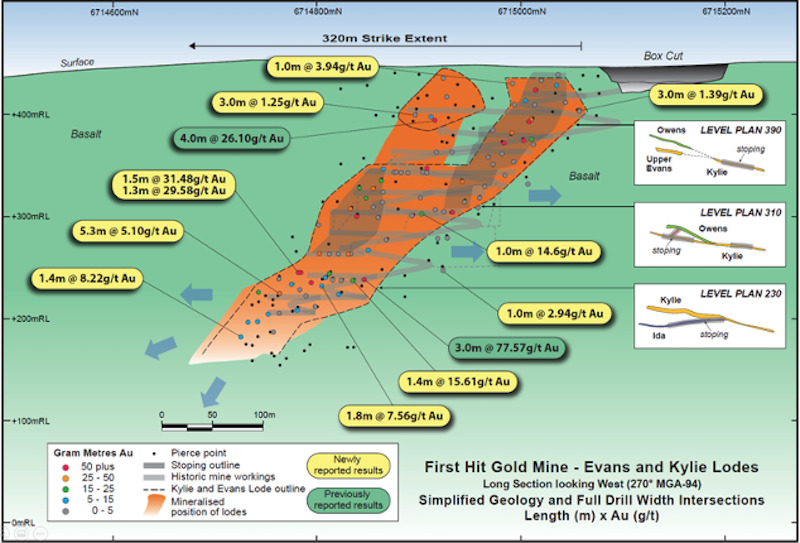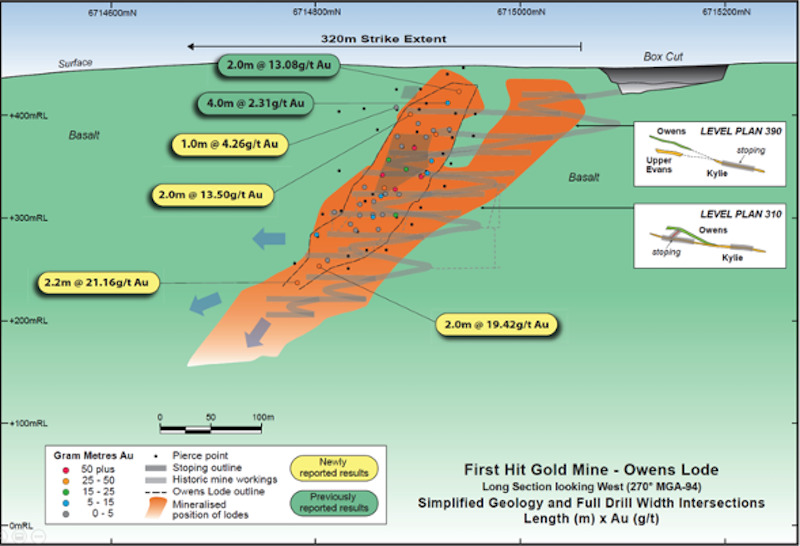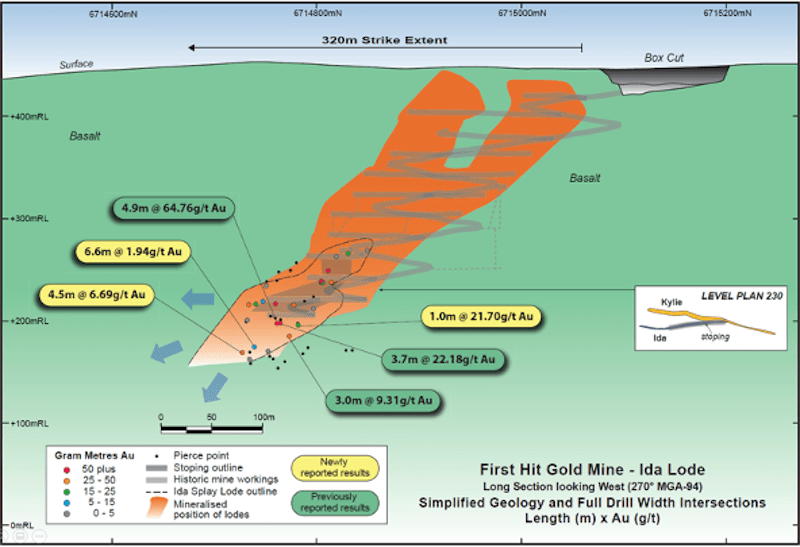Viking uncovers more unmined gold at historic First Hit workings

Pic: Tyler Stableford / Stone via Getty Images
Viking Mines has identified further unmined, high-grade gold intercepts in the historic database of its recently acquired First Hit gold project near Kalgoorlie.
Viking (ASX:VKA), which last week completed the acquisition and commenced exploration work at First Hit, today announced that a 3D review of the project’s historical underground mine workings had highlighted unmined, high-grade gold intersections.
Intersects include:
- 5m at 31.48 grams per tonne gold for 47 gram-metres from 65.8m;
- 3m at 5.1g/t gold for 27 gram-metres from 62.6m;
- 5m at 6.69g/t gold for 30 gram-metres from 92.7m;
Previously reported unmined high grade gold intersections at First Hit include:
- 9m at 64.76/t gold for 318 gram-metres from 62.1m;
- 3m at 77.57g/t gold for 233 gram-metres from 224m;
- 4m at 26.1g/t gold for 104 gram-metres from 58m, and;
- 7m at 22.2g/t gold for 82 gram-metres from 64.3m.
Viking said the lode interpretation models demonstrated the potential for the remaining unmined mineralisation at First Hit.
“With the ongoing 3D review of the historical data collected from the First Hit mine, we have identified further high grade drilling intercepts outside the recorded mined areas,” CEO Julian Woodcock said.
“These results reaffirm the potential delivered by this mineralised system and I am eagerly anticipating getting the drill program underway and obtaining the first drill core from this high-grade gold project in more than 18 years.”
As announced last week, diamond drilling planning is underway. The company said the drill rig was due on site in the week beginning February 15.
First Hit’s secrets told
Having reviewed all drilling and underground face sampling data in 3D, Viking has pieced together an updated interpretation of the mineralisation on site.
Through this assessment, the company has determined three main gold bearing lodes which characterise the majority of mineralisation.
These are the Kylie and Owens lodes and the Ida splay.
The Kylie lode is separately identified as the Evans and Kylie lodes near surface. These then merge to form the Kylie lode at depth.
The assays marked yellow in the diagram below are those newly reported in the Kylie lode.

The Owens lode forms in a footwall to the Kylie lode as a splay from the main structure. A cross-lode connects the two at 310 reduced level and has been mined in a different orientation – indicating potential for other orientations of mineralisation.

The Ida splay forms in the hanging wall to the Kylie lode, as a splay from the main structure.

Viking’s geological review of the historical data at First Hit is ongoing, with a view to refining the impending phase one diamond drilling program; assessing the potential of the unmined portions of First Hit, determining areas of mineralisation which are not closed off and lack sufficient drilling; identifying key geological structures which influence controls to mineralisation; and determining any association between rock type, alteration and mineralisation.
The company said more data relating to the historically mined workings was yet to be fully captured, with work ongoing to do so.
Viking is also in the process of trying to source additional key datasets and maps of the underground development which were completed when the mine was developed to help build on their understanding of the mineralisation at First Hit.
This article was developed in collaboration with Viking Mines, a Stockhead advertiser at the time of publishing.
This article does not constitute financial product advice. You should consider obtaining independent advice before making any financial decisions.
Related Topics

UNLOCK INSIGHTS
Discover the untold stories of emerging ASX stocks.
Daily news and expert analysis, it's free to subscribe.
By proceeding, you confirm you understand that we handle personal information in accordance with our Privacy Policy.








